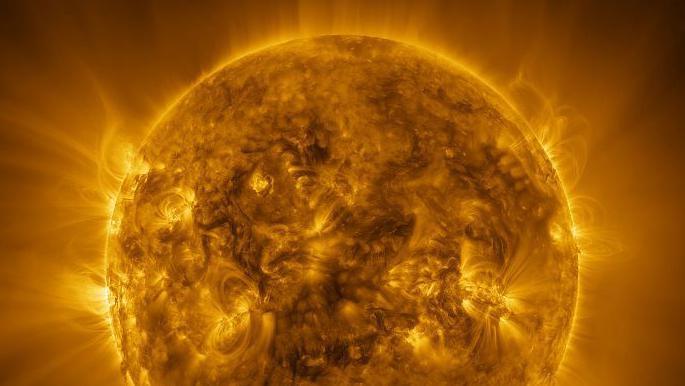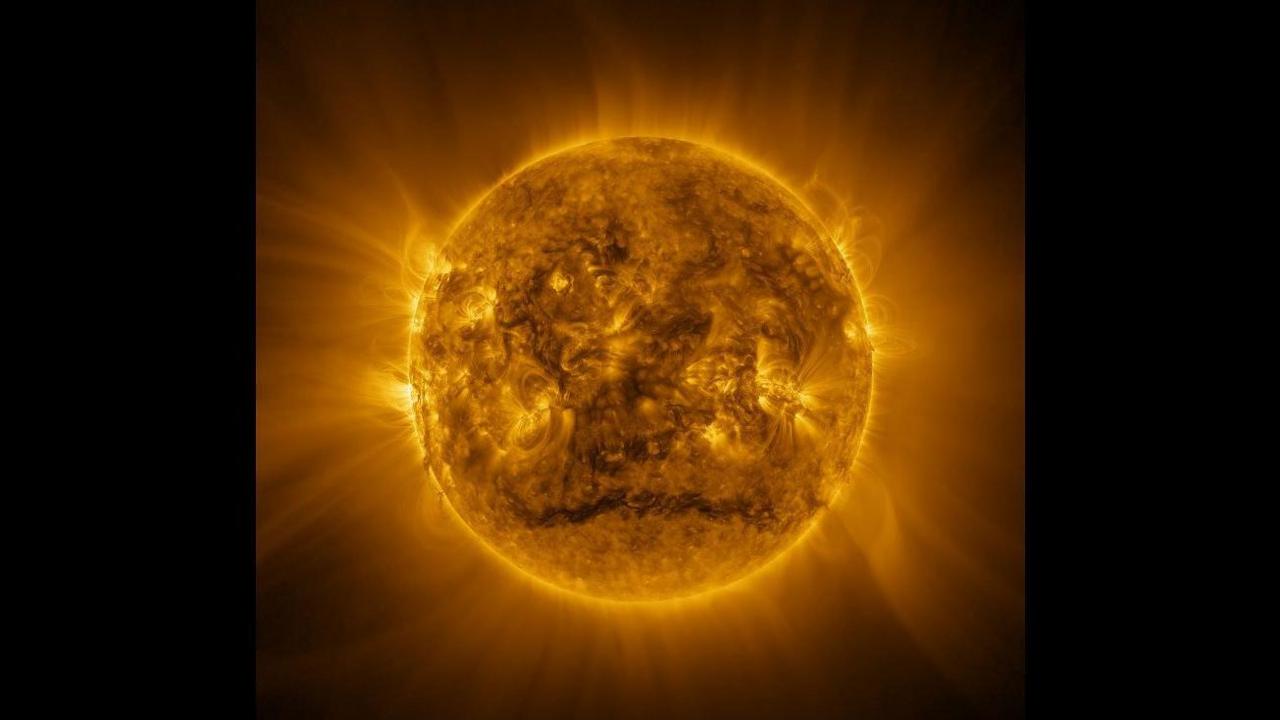Space agency release most detailed picture of the Sun yet

- Published
Space experts have revealed what they say is the most detailed picture of the Sun ever captured.
It was taken by the Solar Orbiter, a satellite launched five years ago by the European Space Agency (ESA) and Nasa.
Its mission is to take images of the Sun closer than any spacecraft has done before.
Scientists hope that the craft will also help answer some big questions, including how solar winds are formed and what heats the upper layers of the Sun's atmosphere to such high temperatures.
More space news
All you need to know about the space mission spotting forests
- Published7 April
All you need to know about Nasa's new SPHEREx telescope
- Published5 March
What's happened?

A number of photos taken by the Solar Orbiter in early March were joined together to produce the widest high-resolution view of the Sun yet.
In fact a whopping 200 individual images, taken by the Solar Orbiter at a distance of around 48 million miles from the Sun, make up the final image.
It shows what the Sun looks like in UV light at a wavelength far beyond what our eyes can see - revealing hot plasma, made up of charged particles, caught in the Sun's magnetic field.
It also shows glowing coronal loops which often appear above active regions.
The dark line across the Sun is called a filament, and made of relatively cool material (still around 10,000 °C).
According to the ESA, they appear as dark regions because they absorb radiation released below it.
When seen side-on, filaments are called prominences. They can extend for many thousands of miles and can last for days or even months.
What is the Solar Orbiter?
Watch: All you need to know about Solar Orbiter (2020)
The Solar Orbiter is a joint mission by the European Space Agency (ESA) and Nasa.
It was launched in February 2020, and started sending back images five months later.
According to the ESA, it is the most complex scientific laboratory ever to have been sent to the Sun, taking images of our star from closer than any spacecraft before.
It's also the first mission to look at its polar regions, and scientists hope that it will help us to better understand and predict periods of stormy space weather.
The Solar Orbiter has ten instruments on board which allow it to observe the unpredictable solar surface, its hot outer atmosphere and changes in the solar wind.
